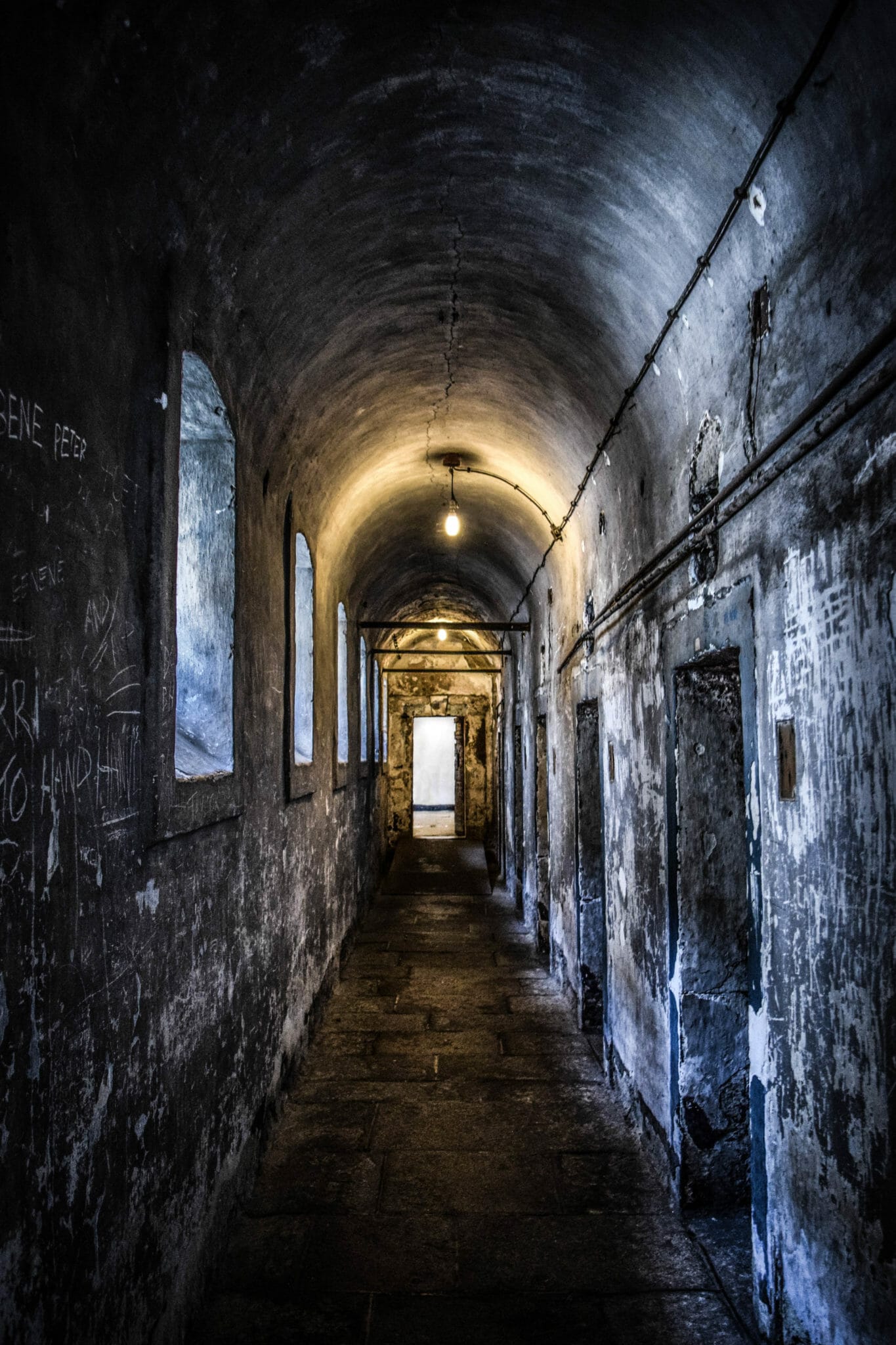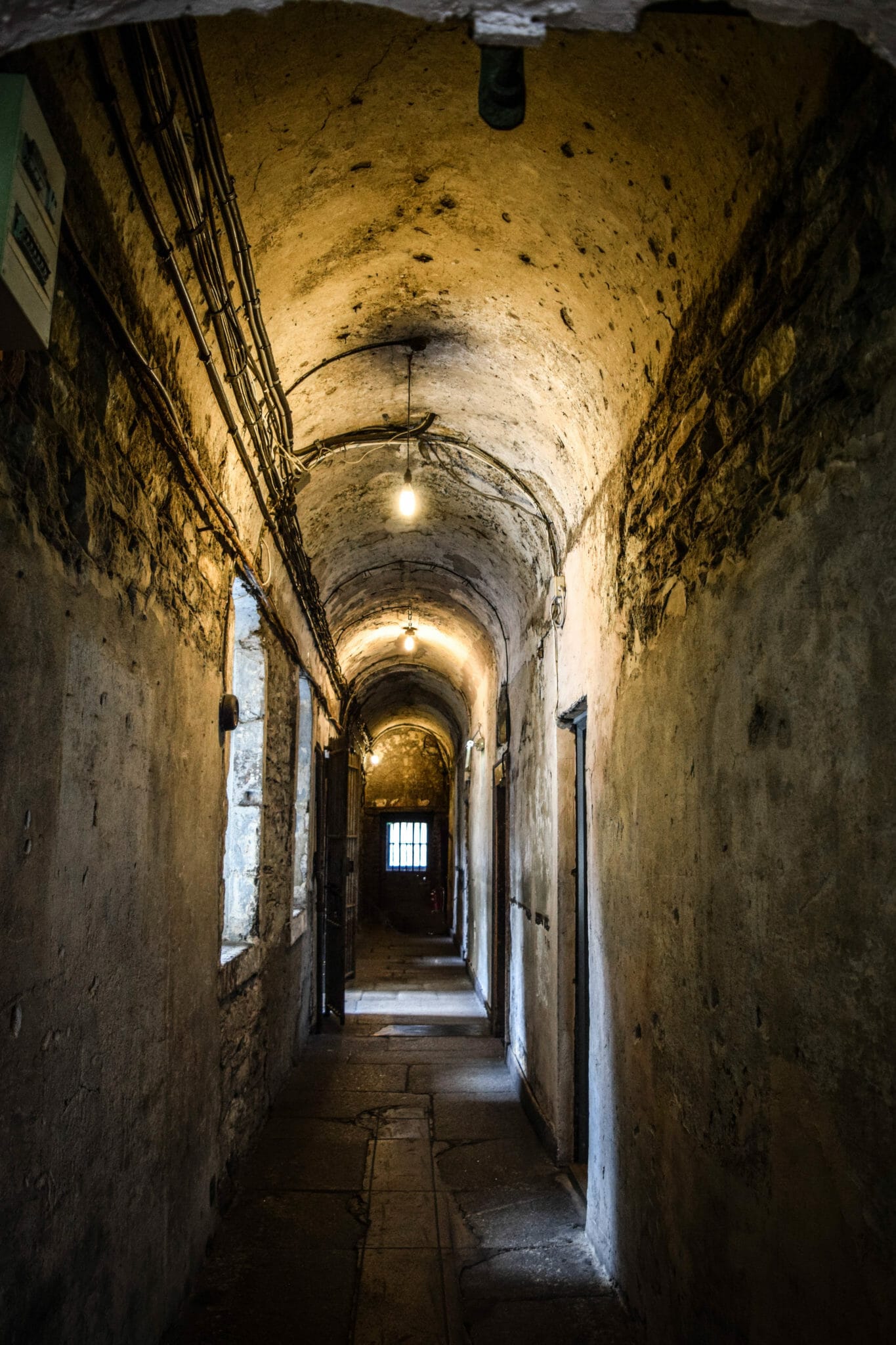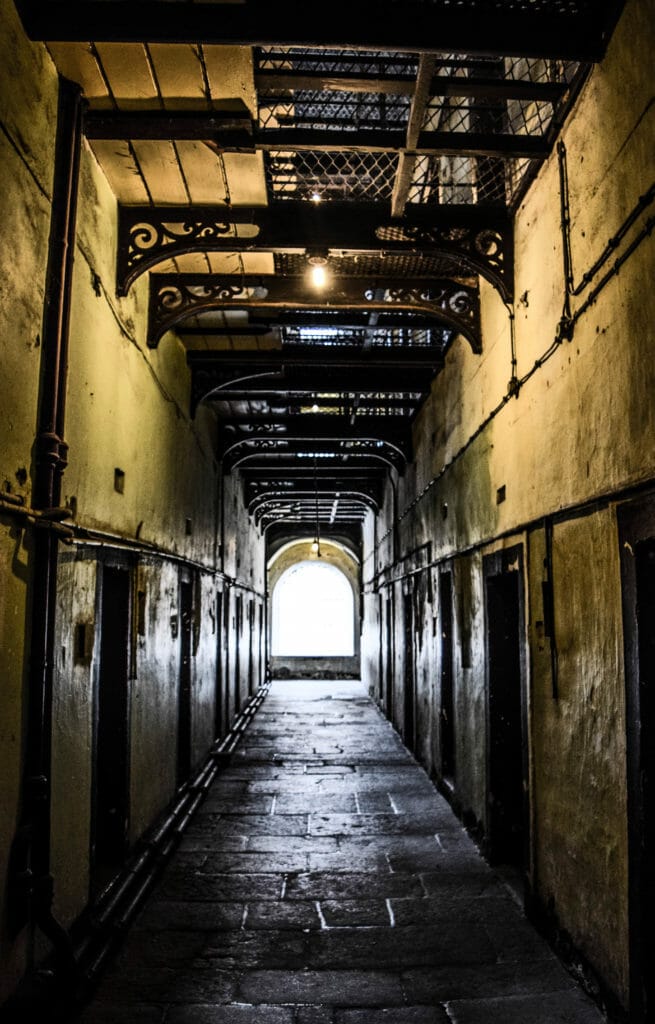A Top Tourist Attraction for History Enthusiasts.
As you step through the scratched and marked up walls of Kilmainham Gaol you can feel the history within the walls. Kilmainham Gaol (Jail) is known as the former prison where Irish revolutionaries, including the leaders of the 1916 Easter Rising, were imprisoned and executed in the prison by the British. As you walk further you can see the exact spots where the leaders, who changed the course of history for Ireland, took their last breaths.
When you start the tour you are taken into the prisons church where you learn the names of all the people who were imprisoned and executed here—many just for petty crimes such as stealing bread Some were children as little as seven years old.
You also learn the story of Easter rising leader Joseph Plunkett and his wife Grace Gifford, who were married seven hours before his execution. They reportedly did not say one word to each other the entire time they were reunited for their marriage because Grace felt that they didn’t need any. Artist, Grace Gifford would later be imprisoned during the Civil War where she would paint pictures on the walls of her cell including one of the Virgin Mary and the Christ Child.
Grace Gifford was imprisoned in the architecturally famous Main Hall. The Main Hall was designed with religious beliefs in mind. The sky light signifying heaven hoping to inspire the inmates to look heavenward. Under the ground were four cellar-level isolation cells intended for dark and solitary confinement.
As you continue with the tour you get to the exact spot where the Easter Rising leaders had been executed, marked with a cross. One cross is placed by the end of the courtyard and one cross is placed a few steps from the entrance.
Most of the leaders of the Easter Rising were executed by firing squad at the end of the courtyard. James Connolly was the only one executed by the door. This is because Connolly was so badly injured from fighting that he was actually held in a hospital with only one or two more days to live. However, the execution order was still enforced. Transported by ambulance, Connolly was executed by the entrance (because he could not walk) and tied up to a chair (because he could not stand). This inhumane execution is what prompted the beginning of the questioning of Kilmainham’s ethical status and what started the movement to close the prison for good.
The prison was later restored in the 1960’s to be used as a museum on the Irish Revolution and the Easter Rising. This writer couldn’t help but stop and appreciate every step through this museum so dripping with history. This once horrible and negative place now stands as a symbol of the country’s independence.
When:
Kilmainham Gaol Museum is open all year round, except the 24th, 25th, and 26th of December.
January – December *
9:30am – 5:30pm
(Last tour 4:15pm)
* 1st June – 31st August
9:00am – 6:45pm (last admission 5:30pm)
Where:
Kilmainham Gaol
Inchicore Rd, Kilmainham,
Dublin 8, D08 RK28, Ireland
Tickets:
€4+
For more information on tickets, visit the Kilmainham Gaol website.
Photography by: Nicole Granados








